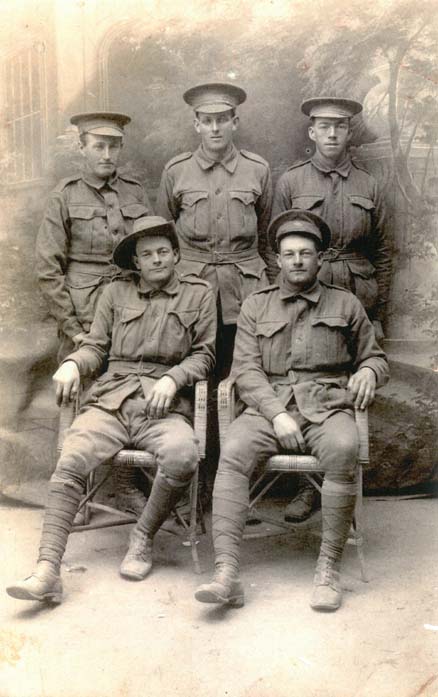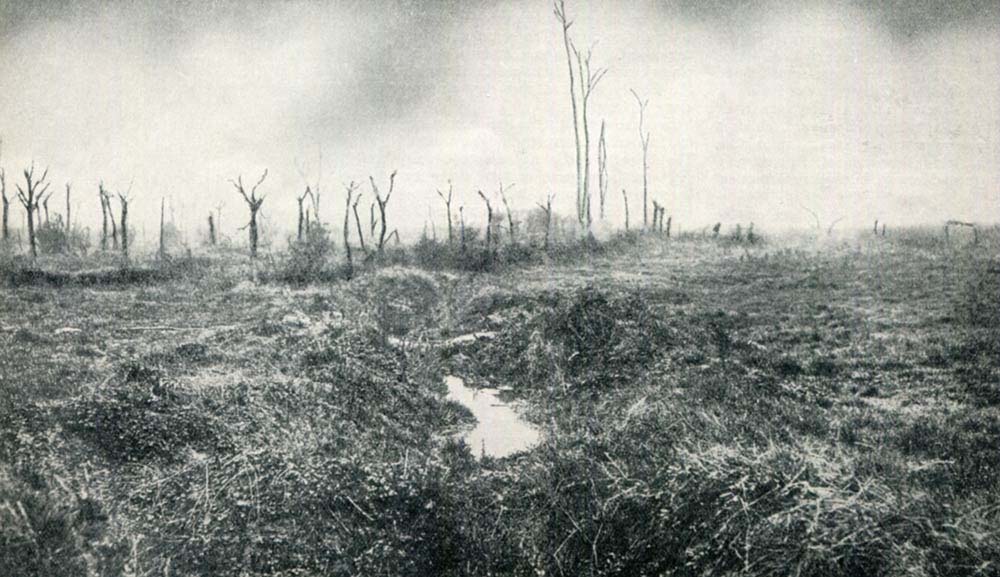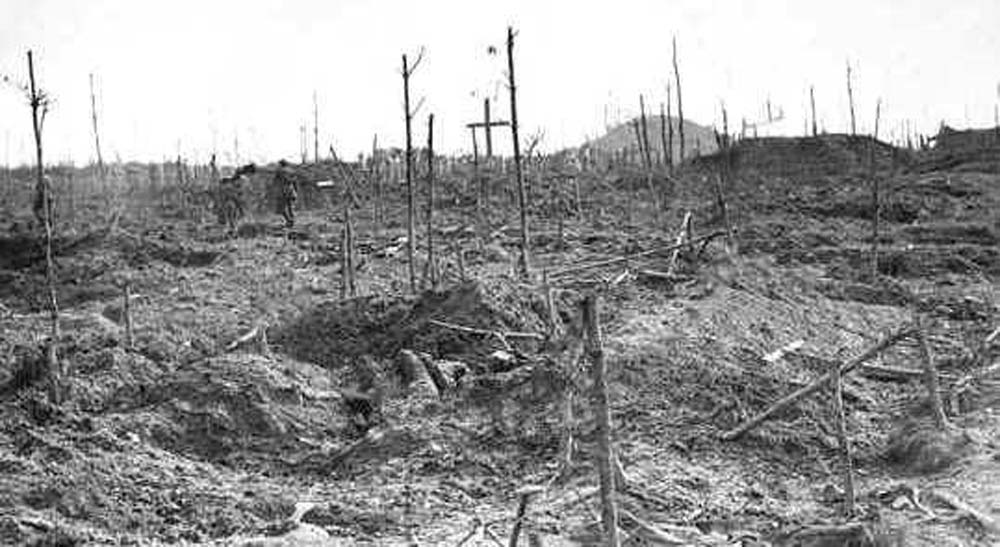
By Peter McCullough
Although the word “iconic” tends to be used rather loosely at times, there are certain photographs for which that description can be justified. Some such photographs are terrifying; others are heart-warming. Sadly, many of the world’s iconic photographs have emerged from an international conflict.
But what of the local level? When she was compiling her book “The Great War Comes to Somerville” Lisa Bayley chose this photograph of five local men who enlisted on the same day (20 July, 1915).
It seems to express so much: the three men at the rear appear a little apprehensive while the two at the front (the Bond brothers) have a look of eager anticipation. You can almost hear one of them saying “Let’s get over there and sort out this bloody Kaiser bloke.”
Perhaps a question that should be asked is: “How did these five young men fare over the next few years?” In fact only four returned and they were all damaged in some way; the Bonds, who looked so confident in 1915, suffered the most. Here is an account of what was experienced on the Western Front:
William Arthur (“Will”) Bond
William Bond was killed at Fromelles on 19 July, 1916 and is buried at Aubers Ridge British Cemetery. (Fromelles was, in fact, the biggest disaster in Australia’s military history with the 5th Division losing 5533 men in one night’s action.)

Charles Rundle (“Charlie”) Bond
Charles Bond was a member of the 5th Pioneer Battalion and spent several years at the Front. His luck ran out on 17 April, 1918 when he was a victim of “gas shell poisoning”. After spending some time in the Reading War Hospital in England, he returned to Australia in April, 1919.
However, like many of those who were gassed, Charlie never recovered and he died on 6 October, 1941. He was 47.
John Edwin (“Jack”) Cozens
John Cozens became a driver with the 59th Battalion and experienced his first hospitalization in Egypt with diarrhoea. At the Front he was hospitalized on 16 November, 1916 when “injured in the field.” In fact he sustained a broken jaw.
On 24 September, 1917 he was wounded in action experiencing “shrapnel in legs and buttock.” This required hospitalization in London although he was able to rejoin his battalion in January, 1918. He, too, returned to Australia in April, 1919. There is no further information in the official records although one could assume, in light of the location of his wound, Jack would have generally preferred to stand rather than sit.
Samuel Henry (“Harry”) Male
Samuel Male left Melbourne on the same ship (HMAT Ulysses) as Jack Cozens on 27 October, 1915 and was allocated to the 7th Battalion. By July 1916 Harry was in hospital in France with a persistent knee problem, probably something that he was able to hide when he had his medical back in Australia. After some time in London he was repatriated to Australia in February, 1917. Although he might not have felt so at the time, Harry was probably the luckiest of the five.
Robert Charles (“Rob”) Young
Robert Young became a member of the 58th Battalion and suffered his first hospitalization in Egypt in February, 1916, with measles. By December, 1916, he, too, was in France where he was admitted to hospital in May, 1917, with “trench fever.” By October, 1917, he was back in hospital with an illness diagnosed as “shell shock”; this was apparently the result of being buried in a trench at Polygon Wood. (This battle, part of the Third Battle of Ypres, took place between 26 September and 3 October, 1917. Today it is commemorated by the memorial for the 5th Australian Division.)

No further information is contained in the file of Rob Young; some men were able to overcome their shell shock but for others it was a burden which they carried for the rest of their lives.
So we can conclude that none of the five came home unscathed and, indeed, one never came home at all. But wait, there’s more! While the Bond brothers joined up at the same time, it should be noted that both Harry Male and Rob Young had brothers who had already enlisted. It is interesting to see how they fared.
Edward George (“Ted”) Male
Edward Male joined up only a week before his brother and became part of the 13th Light Horse Regiment. His service was plagued by illness which started in February, 1916 when he was admitted to hospital with “orchitis” while still in Staging Camp. Over the next two years while in France he was frequently hospitalized; this include a bout of influenza in late 1916, “debility” on several occasions, a “contused” foot and “pyrexia.” He returned to Australia in May, 1919, having spent much of his time on the sick list.
William Hay (“Billy”) Young
William Young enlisted several months before his brother (in April, 1915) and was posted to the 24th Battalion. His first few months overseas were plagued by bouts of pneumonia, when he was reported as being “dangerously ill”, as well as a bout of diarrhoea, before he joined his unit in France on 25 July, 1916. A month later he was in England recovering from “GSW left leg and foot.” Back in France his luck ran out on 26 August, 1916 when he experienced “GSW right leg”; another evacuation was required. After returning to France he was hospitalized on 14 October, 1917 with “trench fever”, and then “trench feet.” Restored to health he was back in France in early February, 1918, only to be gassed a month later. He rejoined his unit on 26 July, 1918 but was back in hospital with “tachycardia” on 5 August. In January, 1919 Billy Young was invalided back to Australia and was discharged as “medically unfit.” His service history qualified him for a TPI pension.

Copies of “The Great War Comes to Somerville” can be obtained from the author, Lisa Bayley, for $40.
Her phone number is 0404 010 158.





